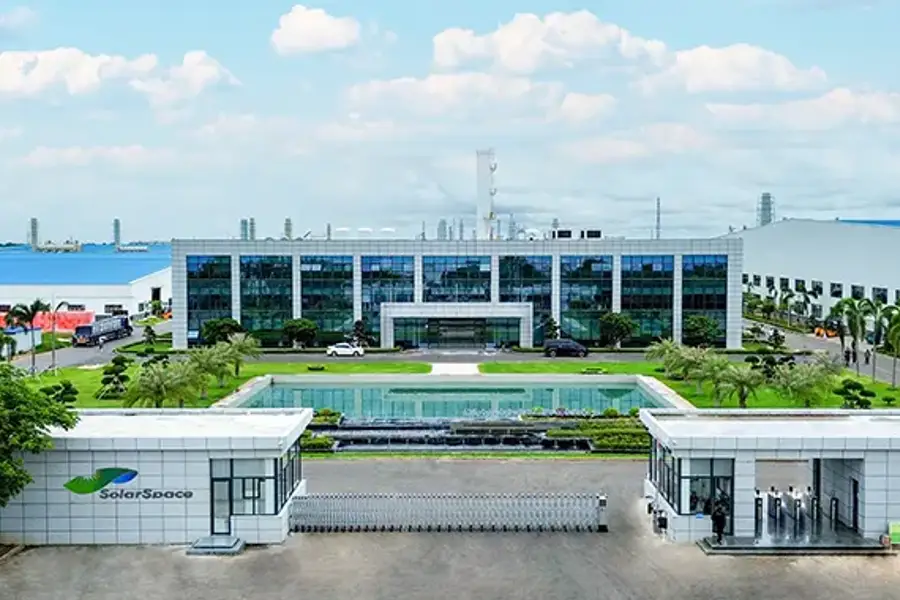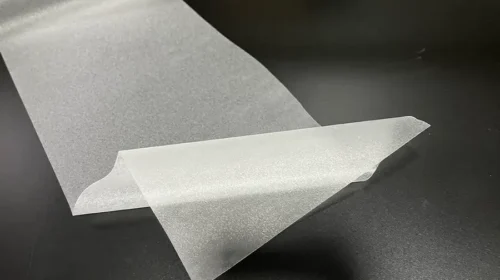Sun rises again for SolarSpace as it makes second IPO bid

The solar cell maker’s new listing application shows nearly all of its major metrics began to improve in the first half of this year, including a return to profitability
Key Takeaways:
- SolarSpace has filed a new application to list in Hong Kong, reporting it returned to revenue growth and profitability in the first half of 2025
- The solar cell maker’s rapid turnaround owes to its shifting focuses on international markets and advanced N-type cells
By Doug Young
What a difference a half year makes.
That’s easily the biggest takeaway in a new Hong Kong listing application filed on Monday by solar cell maker SolarSpace Technology Co. Ltd., which comes six months after the company first filed to list in Hong Kong. The difference between the earlier application and this latest one is literally like night and day in almost every way.
When SolarSpace, the world’s second-largest maker of solar cells that convert sunlight into electricity, first filed to list in March, it had just reported its revenue plunged by almost half in 2024 to 11.32 billion yuan ($1.6 billion), while it swung massively into the red with a loss of 1.29 billion yuan for the year. Nearly all of its other key metrics performed similarly, as its gross margin slipped into negative territory and it recorded a massive cash outflow.
Fast forward to the latest application, which shows the company staged a remarkable turnaround in the first half of this year. Its revenue bottomed out and began to grow again, while its gross margin also returned to positive territory. And perhaps most importantly, the company returned to profitability.
Industry watchers will know that SolarSpace and its peers throughout the solar energy sector have all been suffering for more than a year due to a massive buildup of new production capacity that has led to huge oversupply and tumbling prices. As that happened, most companies slid into the red, leading many to slash production to limit their losses.
China has done its part to try and fix the situation by encouraging producers to slash their production and eliminate outdated capacity. It has also embarked on a massive buildup of its own solar power production capacity, adding a massive 256 GW in the first half of this year alone – representing two-thirds of the 380 GW added worldwide.
What’s most interesting about SolarSpace’s nascent turnaround is that it’s one of the first we’ve heard of in this industry. A big part of that story appears to be due to the company’s pullback in its home China market that, while massive, is also extremely cut-throat since the big majority of producers are all based there. Instead, the company has shifted its sights to other global markets that have much better margins.
It’s servicing those other markets mostly from a production base in Laos, whose solar products weren’t subject to punishing anti-dumping tariffs imposed by the U.S. and some other countries against Chinese-made products. In a somewhat ominous signal, the U.S. announced on Aug. 7 it was launching an anti-dumping probe into products made in several Asian countries, including Laos.
A rollout of new anti-dumping tariffs, which are separate from Donald Trump’s trade war tariffs, could deal a setback to SolarSpace’s recovery, since the U.S. is one of the foreign markets that helped to drive the company’s remarkable recovery in the first half of this year. Its U.S. sales rose nearly fivefold in the first half of 2025 to 1.46 billion yuan from 310 million yuan a year earlier, to account for about a fifth of its revenue.
Focus on N-type cells
As it shifted its sales focus from China to international markets, SolarSpace’s revenue mix underwent a remarkable transformation in the first half of this year that was a major factor behind its return to profitability. The company’s overall revenue rose 27% year-on-year in the first half to 7.47 billion yuan from 5.9 billion yuan in the year-ago period.
But within that mix, the company’s sales to Mainland China plunged 40% to 2.7 billion yuan in the first half of the year from 4.43 billion yuan a year earlier. International sales moved in the opposite direction, more than tripling to 4.76 billion yuan from 1.48 billion yuan over the same period. In that process, international sales grew to about two-thirds of the company’s total from just one-quarter a year earlier.
We’ve already noted that the U.S. was one of the fastest growing regions for the company, but Vietnam also posted very strong growth to become SolarSpace’s second largest international market, behind only the U.S., accounting for about 16% of the company’s sales in the first half of the year. Other strong performers were Thailand and Singapore.
Another important factor behind SolarSpace’s comeback appears to be its rapid shift to newer N-type cells and its rapid retirement of older P-type cell technology. Such retirement of older technology is exactly what China is promoting to get rid of overcapacity, and SolarSpace seems to be aggressively pursuing that approach. Revenue from N-type cells nearly tripled year-on-year to 5.33 billion yuan in the first half of the year, accounting for 71% of the company’s revenue for the period. Revenue from P-type cells moved in the other direction, falling by two-thirds year-on-year to 985 million yuan.
The company noted that producing in Laos is generally more expensive than in China, but that higher margins from sales to its global markets more than offsets the higher expense. Accordingly, it continues to build up its Laos production base, which now has 7.6 GW of annual capacity, or about a third of its total of 22.8 GW at the end of June.
Notably, the company is using nearly all of its capacity in Laos, which services global customers, meaning most of the roughly 3.2 GW of its capacity that was idle in the first half of the year was in China. And the company’s listing document shows its Laos production base accounted for 35.7% of its solar cell output in the first half of the year, up from just 2% in 2023.
The big shift towards international sales helped SolarSpace return to gross profitability in the first half of the year, though that metric remained negative for its China business. It also swung back into the black with a 1.21 billion yuan profit in the first half of the year, reversing a 717 million yuan loss in the year-ago period. And as we’ve previously noted, the company also returned to positive cashflow in the first half of the year.
The remarkable turnaround bodes well for SolarSpace’s latest IPO bid, since investors will obviously be more interested in a profitable company than a money-losing one. The potential for U.S. anti-dumping tariffs remains one potential overhang, but, on the whole, we would expect this listing to get relatively strong interest from investors if it makes it to market.
To subscribe to Bamboo Works free weekly newsletter, click here






